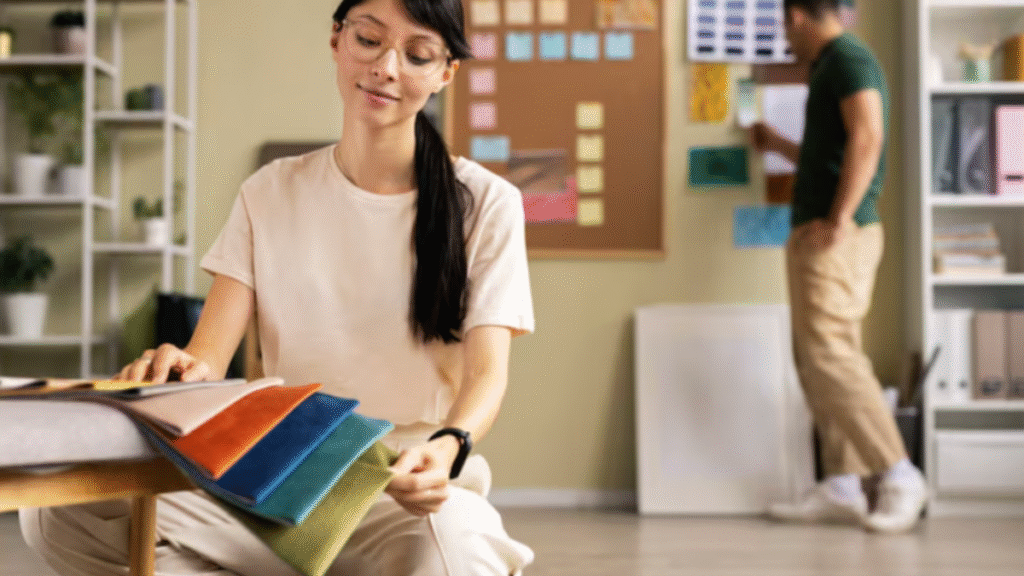In our fast-paced world, where chaos often reigns, the concept of “simpciry” in design emerges as a breath of fresh air. Imagine stepping into a space that not only speaks to your senses but also calms your mind. It’s about harmonizing aesthetics with functionality—creating environments that are both beautiful and practical. As we explore simpciry in design, we’ll uncover how simplicity can transform our homes, workplaces, and even travel experiences into havens of serenity. Let’s dive deep into this enlightening journey toward intentional living!
Outline for “Simpciry in Design: Creating Spaces that Inspire Serenity and Functionality”
Simpciry in design is about embracing simplicity. It’s a philosophy that prioritizes clarity and purpose, allowing spaces to breathe and speak volumes without excess clutter. This approach not only enhances visual appeal but also fosters functionality.
By focusing on essential elements, we can create environments that inspire tranquility and ease. Whether it’s a cozy home nook or an efficient workspace, simpciry transforms our surroundings into reflections of peace and practicality, enriching our everyday experiences.
I. Understanding Simpciry
Simpciry is more than a design trend; it’s a philosophy that embraces minimalism and clarity. It encourages the removal of excess, allowing spaces to breathe and foster creativity.
Incorporating simpciry means creating environments that prioritize functionality while promoting tranquility. This approach transforms ordinary spaces into havens of peace where every element serves a purpose, contributing to an overall sense of well-being.
Purpose and Definition of Simpciry
Simpciry is about embracing minimalism while prioritizing functionality and aesthetics. It seeks to strip away the unnecessary, allowing spaces to breathe and resonate with peace.
At its core, simpciry fosters an environment where every element serves a purpose. This approach cultivates clarity in design and encourages thoughtful choices that enhance daily living experiences. By focusing on what truly matters, we create inviting surroundings that inspire tranquility and efficiency.
Importance of Simpciry in Design
Simplicity in design is essential for creating environments that resonate with our inner selves. It strips away distractions, allowing us to focus on what truly matters. This clarity fosters a sense of peace and harmony.
Moreover, simplicity enhances usability. When spaces are designed with fewer elements, they become more functional and easier to navigate. A well-executed simple design can transform everyday experiences into moments of joy and tranquility.
What Simpciry Provides
Simpciry provides a breath of fresh air in chaotic environments. It strips away the unnecessary, allowing for clarity and focus. With fewer distractions, individuals can truly appreciate their surroundings.
This approach fosters creativity and inspiration. Spaces designed with simpciry encourage mindfulness, making them perfect for relaxation or productivity. Whether at home or work, simplicity enhances our connection to each space we inhabit.
II. Applying Simpciry in Design
Creating spaces that radiate serenity and functionality is at the heart of applying simpciry in design. Focus on decluttering areas to promote a sense of calm. Use natural light and open layouts to enhance the flow of energy within rooms.
Home simplicity can be achieved through intentional choices in furniture, color palettes, and decor. Mindfulness should guide these selections, ensuring every element serves a purpose while contributing to an atmosphere of peace and usability.
Creating Spaces for Serenity and Functionality
Creating spaces that blend serenity with functionality requires thoughtful design choices. Use calming colors and natural materials to evoke a sense of tranquility while ensuring the layout allows for ease of movement and accessibility.
Incorporating multifunctional furniture can enhance both aesthetics and practicality. Consider pieces that serve dual purposes, like storage ottomans or wall-mounted desks, which maximize space without sacrificing comfort or style. This harmonious balance creates an environment that promotes relaxation while supporting daily activities.
Home Simplicity and Design Strategies
Embracing home simplicity begins with decluttering. Remove items that don’t serve a purpose or bring joy. This paves the way for clean lines and open spaces, allowing the mind to breathe.
Next, focus on multifunctional furniture. Choose pieces that adapt to your needs, maximizing both space and functionality. Neutral color palettes enhance tranquility while natural materials add warmth, creating an inviting atmosphere conducive to relaxation and creativity in daily life.
Mindfulness in Design
Mindfulness in design centers around creating spaces that foster awareness and presence. It encourages us to consider how our surroundings affect our emotions, thoughts, and actions. By infusing mindfulness into every element of a space, from furniture placement to color choices, we cultivate an environment that nurtures well-being.
Designing with mindfulness invites intentionality into each decision. This approach helps eliminate distractions and promotes tranquility, allowing individuals to fully engage with their environment while enhancing the overall experience of the space.
Integrating Simplicity in Travel Spaces
Travel spaces can often feel chaotic and overwhelming. By integrating simpciry, we create environments that promote relaxation and ease. This approach focuses on decluttering, using natural materials, and optimizing layouts for functionality.
Designing hotels or airports with simplicity in mind enhances the traveler’s experience. Simple color palettes and minimalistic furnishings invite tranquility while ensuring everything is easily accessible. A serene atmosphere leads to a more enjoyable journey from start to finish.
III. Benefits of Simplicity
Simplicity enhances functionality by streamlining spaces, making them easier to navigate and use. When a design prioritizes essential elements, it eliminates clutter that can overwhelm the mind.
Inspiring serenity is another key benefit of simplicity. Clean lines and open areas foster calmness, allowing individuals to recharge and find peace in their surroundings. This tranquility positively impacts daily life, promoting mental clarity and overall well-being.
Enhancing Functionality through Simpciry
Simplicity in design streamlines spaces, making them more functional. By minimizing clutter, essential elements stand out and serve their purpose effectively. This clarity enhances user experience.
When every piece has its place, tasks become easier to manage. Simplicity allows for intuitive navigation throughout a space, whether it’s at home or work. A well-organized environment fosters productivity and creativity, enabling individuals to focus on what truly matters without distraction.
Inspiring Serenity and Calmness in Spaces
Creating serene spaces involves thoughtful design choices that prioritize calmness. Soft colors, natural materials, and minimal clutter contribute to a peaceful atmosphere. Incorporating elements like plants or water features can enhance this tranquility.
Lighting plays a crucial role as well. Soft, warm lighting encourages relaxation and adds to the overall ambiance. By intentionally selecting these design elements, you cultivate an environment where serenity thrives, allowing individuals to unwind and rejuvenate in their surroundings.
Improving Quality of Life Areas with Simpciry
Simplicity in design transforms our daily environments, enhancing well-being. By reducing clutter and distractions, spaces become more inviting and functional. This allows for better focus on tasks that matter most.
Implementing simple designs encourages mindfulness. When surroundings are serene and purposeful, stress levels decrease. People find it easier to connect with their environment, leading to greater satisfaction in life’s various aspects—from workspaces to relaxation areas.
IV. Case Studies and Examples
Numerous successful implementations of simpciry in design showcase its effectiveness. For instance, minimalist cafes emphasize clean lines and open spaces, allowing patrons to experience tranquility while enjoying their coffee.
In residential settings, homes designed with simplicity foster a sense of calm. Natural light floods the space through large windows, while neutral color palettes create a serene atmosphere that invites relaxation and connection with nature. These examples illustrate how embracing simpciry can enhance user experiences significantly.
Successful Implementations of Simplicity in Design
Many renowned brands have embraced simpciry in their design ethos. For instance, Apple’s clean lines and minimal interfaces promote user focus while eliminating distractions. This approach has set a standard in tech design that prioritizes functionality without sacrificing aesthetics.
Similarly, Scandinavian interior designs embody simplicity through natural materials and open spaces. These environments foster tranquility and enhance everyday living, encouraging individuals to connect with their surroundings on a deeper level.
Impact of Simpciry on User Experience
The impact of simpciry on user experience is profound. When spaces are uncluttered and thoughtfully designed, users feel more at ease. This simplicity allows for easier navigation and interaction, creating a seamless flow in daily activities.
Moreover, environments that embrace simpciry often lead to enhanced mental clarity. Users can focus better without distractions from excess decor or complexity. A serene atmosphere nurtures creativity and productivity, making every moment spent within the space more fulfilling.
V. Conclusion
Embracing simpciry in design can transform spaces into havens of tranquility and efficiency. By focusing on the essentials, we create environments that foster peace and enhance functionality.
As trends evolve, simplicity remains a timeless principle. It invites creativity while encouraging mindful living. Spaces designed with intention nurture our well-being, making them valuable in today’s fast-paced world.
Recap of Simpciry Principles in Design
Simplicity in design centers around creating spaces that are both functional and calming. By stripping away the unnecessary, we can focus on what truly matters, enhancing our everyday experiences.
Embracing minimalism fosters clarity and peace. Thoughtfully curated elements allow us to interact with our surroundings more meaningfully, promoting a sense of balance and harmony in every space






